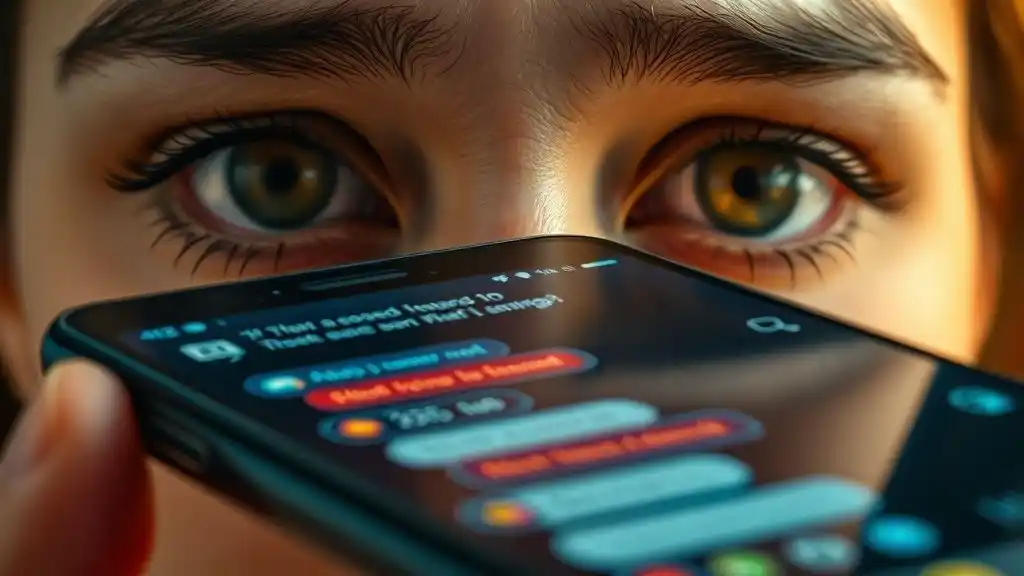
Therapy-Style Prompts + Caution About False Healing
Therapy-Style Prompts + Caution About False Healing
The AI That Listens When No One Else Will
Prompt-Based Emotional Support for Breakups)
Can ChatGPT help me move on? It’s a quiet question asked at 4 a.m., with swollen eyes and an aching chest, when your friends are asleep and your ex has moved on without saying much at all. In this strange, digital grief — where the goodbye came in a text or never came at all — many turn to AI not just for answers, but for emotional survival.
And oddly enough… it listens. Without judgment. Without interruption. It remembers what you told it yesterday. It mirrors your pain in sentences.
But is that enough?
This part of the blog explores how tools like ChatGPT can gently assist with emotional processing, especially when you feel alone., we’ll look at the limits and emotional risks of using AI for healing — the shadows beneath the comfort.
Why We Turn to AI After Heartbreak
The truth is, after a breakup, even the most self-aware person struggles. We reach out — and often reach back — just to stop the ache for five minutes. And when no one answers, the internet does. You type:
“Can ChatGPT help me move on?”
And something in you hopes the machine will give you what your partner couldn’t:
- Closure
- Answers
- Validation
AI can’t hug you. But it can respond without disappearing. That matters more than people realize.
How AI Becomes a Safe Space for the First Stage of Healing
Let’s be honest. Not everyone can afford therapy. Not everyone has emotionally mature friends. And not everyone is ready to say, “I’m not okay.”
Here’s what ChatGPT can offer in the early stages of heartbreak — if you’re wondering, “Can ChatGPT Help Me Move On?”:
1. Prompted Emotional Reflection
You might ask, “Can ChatGPT Help Me Move On?”
Try prompts like:
- “Write a letter I’ll never send to the person who left me.”
- “Help me describe what this heartbreak feels like in my body.”
- “Why do I still miss them even when I know they weren’t right for me?”
You get journaling prompts without silence, and sometimes that’s enough to crack your heart open in the healthiest way.
2. Validation You Can Control

Sometimes you don’t want advice. You want someone to say,
“Yes. That hurt. You didn’t deserve that. You’re allowed to feel all of this.”
AI, when prompted well, can mirror that back to you. It doesn’t tell you to “just move on.” It doesn’t invalidate you by saying, “at least it happened.” It simply responds with language that soothes.
3. Safe Practice for Rebuilding Self-Worth
After a toxic breakup, you often forget who you are. You can ask AI to help remind you. You might wonder, “Can ChatGPT Help Me Move On?”
Try:
- “What are 10 powerful things I did in that relationship?”
- “Help me write a speech about how I survived.”
- “What does it mean to love myself again?”
These aren’t just prompts. They’re ways of gently reparenting your inner self after emotional upheaval. abandonment.
ChatGPT Can’t Replace Real People — But It Can Hold You Until You’re Ready
There’s a sacred space between being heartbroken and being healed. And sometimes, you don’t need someone to fix you — you just need something to witness you.
That’s where AI — and tools like ChatGPT — can softly hold space. If you’re wondering, “Can ChatGPT Help Me Move On?” this is exactly how it can:
In that midnight grief spiral:
- You don’t feel crazy for still loving them.
- You can replay the “what-ifs” without shame.
- You can write without needing to be brave.
Because the AI won’t laugh at your pain. It won’t ghost you. It won’t say, “Just block them.” It’ll say, “Tell me more.”And sometimes, that’s all we need to survive the first week.
But… Is It Real Healing?The Comfort Trap of Talking to a Machine
It begins innocently.
Then a goodbye message you’ll never send.
Then a poem.
Then a response to the poem…
Then one day you realize — you’ve been talking to the AI more than you’ve talked to any real person.
You might ask yourself, “Can ChatGPT Help Me Move On?” It can feel like therapy, but it isn’t therapy. It’s a mirror. A voice simulator. A soft landing pad. But healing — real healing — is a bloody, uncomfortable, confrontational thing. And no machine, no matter how empathetic it sounds, can walk you through the full fire of loss.

AI Can Numb the Ache — But Not Release the Grief
Here’s where it gets tricky: AI gives you beautiful words. It reflects your feelings with eerie precision. It never dismisses you.
So you feel seen. And being comforted… isn’t the same as being challenged to grow.
Over time, you might ask yourself, “Can ChatGPT Help Me Move On?”
Because without real confrontation, this can lead to:
- Looped healing: You process the same pain again and again, but never move past it.
- Emotional detachment: You start expressing grief through prompts, not real tears.
- Avoidance masked as progress: You say “I’m working on myself” when you’re really just… writing to something safe.
3 Hidden Risks of Using ChatGPT for Breakup Recovery
1. False Closure
AI can write the most beautiful goodbye letters — even ones your ex never gave you. You might wonder, “Can ChatGPT Help Me Move On?” The answer is yes, it can offer comfort, but closure you invent in your mind isn’t always emotionally binding. You may feel better for a day… but the ache returns because the wound wasn’t closed with reality; it was papered over by perfect paragraphs.
Healing takes truth, not just narrative.
2. Self-Gaslighting Through Comfort
AI is designed to agree with you. If you say,
“He ghosted me, but maybe he loved me anyway,”
you might wonder, “Can ChatGPT Help Me Move On?”
But sometimes, what you really need is a friend to say,
“He didn’t show up. That’s not love.”
AI doesn’t give you the discomfort that leads to emotional maturity..
3. Dependency Disguised as Self-Reflection
Many begin relying on ChatGPT to think for them:
- What should I say to him?
- Should I miss her?
- Is this normal?
- Rewrite this message so I sound stronger.
You might wonder, “Can ChatGPT Help Me Move On?” But healing is messy. It’s not always articulate. When you outsource your emotional process, you lose touch with your raw instincts.
Healing is a language only you can learn to speak for yourself.

How to Use ChatGPT in a Healthy Way After a Breakup
It’s not that AI shouldn’t be part of your healing — it just shouldn’t be the only part. You might ask, “Can ChatGPT Help Me Move On?” The answer is yes, but only as a tool, not a replacement for real emotional work.
1. Use It for Processing, Not Persuasion
Prompt it to help you explore, not convince you of a narrative.
“Help me understand why this is so hard for me to let go.”
2. Limit Your Daily Word Exchange
Set a timer. Or a word limit. If you wouldn’t text a friend 10,000 words a night, don’t dump it all into the AI either. It teaches emotional pacing.
3. Use It to Support Real-World Actions
Ask for scripts to:
- Set boundaries with an ex
- Reach out for therapy
- Write a journal entry for a real-life grief ritual
Let AI be your writing coach, not your life coach.
So… Can ChatGPT Help Me Move On?
Yes. But it can’t do the moving for you.
It can soothe.
It can reflect.
It can offer brilliant emotional scaffolding.
You might wonder, “Can ChatGPT Help Me Move On?” The answer is yes — but healing still requires:
- Messy silence
- Discomfort
- Unfiltered human support
- Facing the person in the mirror — not just feeding prompts into one
AI is a tool, not a therapist. A bridge, not a destination.

When to Stop Talking to ChatGPT About It
If any of these feel familiar, it might be time to shift:
- You’re editing your pain to make it “sound right” for the AI
- You’re checking in with ChatGPT before your own heart
- You’re feeling more clear on the story — but not lighter in your chest
- You’re starting to wonder if your real life can ever match how it responds to you
You might ask yourself, “Can ChatGPT Help Me Move On?” The hard truth? The deepest parts of you… don’t want answers. They want presence. And no machine can fully stay for that.
💬 Final Prompt for Real Closure
Write this into ChatGPT:
“Help me say goodbye to the part of me that kept asking machines to fix what only grief could heal.”
Let it help you one last time. Then… close the tab.
Walk outside.
Feel the ache for real.
That’s where the healing starts.
Disclaimer: This post is for informational and emotional support purposes only. Every relationship is unique, and this is not professional legal, medical, or mental health advice. Read our full disclaimer.
Affiliate Disclosure: Some links in this post may be affiliate links. If you make a purchase through them, I may earn a small commission at no extra cost to you. Learn more here.
Pingback: Best Breakup ChatGPT Prompts to Ask an AI When You’re Heartbroken - Love and Breakups
Pingback: AI RELATIONSHIP and Heartbreak: The Ultimate Guide to Love, Loss, and Digital Goodbyes - Love and Breakups